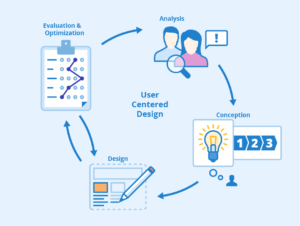Decoding the 500 Internal Server Error: Causes and Solutions – Your Comprehensive Guide
Introduction
In the realm of digital interactions, error codes are like signposts that guide us through the intricacies of the online landscape. Among these codes, the “500 Internal Server Error” stands out as a message that something unexpected has gone wrong on the server’s end.
In this comprehensive guide, we’ll delve into the intricacies of the 500 error, explore its underlying causes, and provide you with a step-by-step guide to effectively troubleshoot and resolve it.
Understanding Server Error
The “500 Internal Server Error” is an HTTP status code that indicates an issue on the server’s side of a web interaction. Unlike client-side errors, which are often caused by incorrect user input or request, the 500 error signals that the server encountered an unexpected condition that prevented it from fulfilling the request.
Common Reasons for the 500 Error
Server Misconfigurations: The primary cause of a 500 error is misconfigurations on the server’s end, such as incorrect file permissions, faulty configurations, or problematic server software updates.
Programming Errors: Bugs, coding mistakes, and logic errors in the server-side code can lead to the server encountering unexpected situations and producing the 500 error.
Resource Exhaustion: If the server’s resources, such as memory or CPU, are exhausted due to high traffic or inefficient code, it can trigger the 500 error.
Database Issues: Problems with database connections, queries, or data integrity can also lead to the server’s inability to fulfill requests.
Resolving the 500 Internal Server Error: Step-by-Step Guide
Reload the Page: Sometimes, the 500 error could be a temporary glitch. Reload the page to see if the error persists.
Check Server Status: If you’re a user, not a developer, check if other websites are working fine. The issue might be with the server itself, and there’s nothing you can do to fix it.
Inspect Error Message: If you’re a developer, check the server’s error logs for more specific error messages that can help pinpoint the issue.
Check Server Configuration: Review the server’s configuration files for any misconfigurations or errors.
Review Recent Changes: If the error occurred after recent updates or changes, revert them and see if the error goes away.
Debugging Code: If you’re a developer, debug your code thoroughly to identify logic errors or bugs that might be triggering the error.
Test Different Browsers: Sometimes, browser-specific issues can lead to the 500 error. Test the website on different browsers to see if the error persists.
Contact Support: If you’re unable to identify and fix the issue, reach out to the website’s support team or your server administrator for assistance.
Conclusion
Facing the 500 Internal Server Error might seem daunting, but with a better understanding of its origins and potential solutions, you’re now well-prepared to tackle it. Whether it’s about investigating server configurations, debugging code, or checking for recent changes, this guide empowers you to navigate through the intricacies of server-side errors with confidence. Remember, patience and a methodical approach are key to resolving the 500 error and ensuring a smooth digital experience for yourself and your users.
For More Related Articles Browse Our Website Blogster.pk
For social Connection You can also Visit and follow our Social media Platforms
Facebook , Instagram, Linkedin, Pinterest, Quora, Twitter, Youtube.





